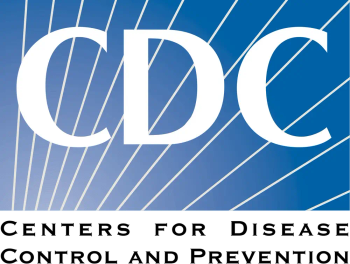Emergency medicine department (ED) prescribing of antiviral medication for children at risk for severe influenza fell by half in the three years following onset of the COVID-19 pandemic despite unchanged treatment guidelines, according to a multicenter, cross-sectional study.1
Tess Stopczynski, MS, Department of Biostatistics, Vanderbilt University Medical Center, Nashville, TN and colleagues found that 15.6% of children at risk for severe influenza, such as those with underlying conditions, were prescribed antiviral medication in EDs in the period of 2021-2023, compared to 32.2% in the pre-pandemic period of 2016-2020.
"These findings highlight that antiviral prescription management in the ED is lacking," Stopczynski and colleagues declare."Understanding reasons behind these trends is important to protect especially vulnerable pediatric patients from avoidable influenza morbidity."
The study spanned 7 influenza seasons, and identified 2,514 children at higher risk of severe influenza from 3,378 influenza-positive children presenting to the ED of one of 7 US pediatric academic hospitals participating in the Centers for Disease Control and Prevention's (CDC's) New Vaccine Surveillance Network. Children included in the analysis had a duration of acute respiratory illness (ARI) of less than 14 days before enrollment, and had fever and/or at least 1 other ARI.
Children were classified at higher risk of severe illness according to criteria of the American Academy of Pediatrics (AAP), Infectious Diseases Society of America (IDSA) and CDC, including younger than 5 years, or with such underlying medical conditions as respiratory, cardiovascular, renal, hepatic or hematologic diseases, metabolic or neurologic disorders, or immunosuppression.These children, according to recommendations of the AAP, IDSA and CDC, should be treated with antivirals for suspected or identified influenza as soon as possible.
What You Need to Know
Antiviral prescribing for high-risk children dropped sharply post-pandemic — falling from 32.2% before COVID-19 to just 15.6% in 2021–2023, despite unchanged treatment guidelines.
Testing increased while treatment decreased, suggesting clinicians may have prioritized diagnostic confirmation—especially differentiating influenza from COVID-19—over timely empiric antiviral therapy.
Gaps between guidelines and practice are widening, with factors like delayed test results, perceptions of antiviral effectiveness, and guideline misunderstandings contributing to undertreatment of vulnerable pediatric patients.
The investigators reviewed medical records to ascertain whether antivirals (oseltamivir, zanamivir, baloxavir, and/or peramivir) were prescribed for this cohort, either by administration in the ED or by prescription at discharge.They also analyzed several factors for possible association with the prescribing; including whether onset of symptoms was longer than 2 days, whether influenza was tested, and whether it was peak influenza season.
"This model included variables selected a priori on the basis of discussions among coauthors regarding clinical factors likely to influence antiviral prescribing, informed by our prior research," the investigators explained.
Stopczynski and colleagues reported a 53% relative decrease of antiviral prescribing for this at risk population in the 3 years following the pandemic onset (described as the late pandemic period). Although antivirals were prescribed less, clinical testing increased during the late pandemic period.The increase in testing, the investigators suggest, could reflect the greater awareness of respiratory infections and need to differentiate influenza from COVID-19. They noted, however, that the percentage of children who were clinically tested for influenza was higher for both those who were and were not prescribed antivirals.
Stopczynski commented on the disparity between increased testing and decreased antiviral treatment with Contagion, emphasizing that multiple factors are likely to be involved.
"Clinicians may have prioritized identifying the etiology of illness over empiric treatment—if SARS-CoV-2 or another virus was suspected, influenza-specific antivirals may not have been prescribed," Stopczynski suggested."Additionally, test results may not have been available soon enough to influence treatment decisions."
The investigators suggest other factors that could contribute to reduction in antiviral prescribing, including varying perceptions of antiviral effectiveness and adverse effects, differences in interpretation of influenza testing, and misunderstanding of guidelines. Regardless of the contributing factors, however, Stopczynski calls for addressing the widening divergence between positive results of influenza diagnostic testing and administration of antiviral treatment.
"To align testing with clinical practice, test should be ordered early in the illness course, and results must be available quickly enough to inform treatment decisions." she said. "Additionally, ensuring that recommended antivirals are both accessible and affordable is critical for translating test results into timely care."
Reference
1.Stopczynski T, Hamdan O, Amarin JZ, et al. Changes in antiviral prescribing for children with influenza in US emergency deparments. JAMA Netw Open. 2025; 8(10):32538729. doi:10.1001/jamanetworkopen.2025.38729.


















































































































































































































































































